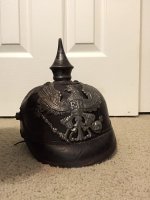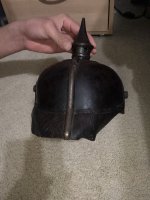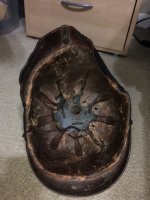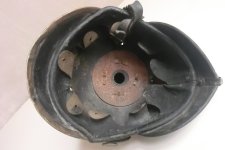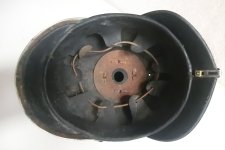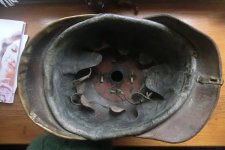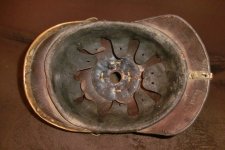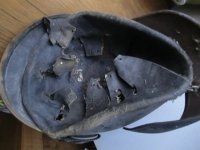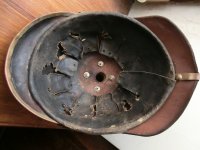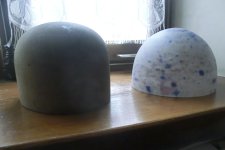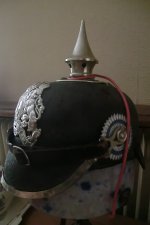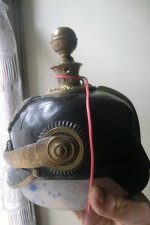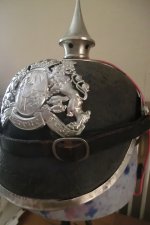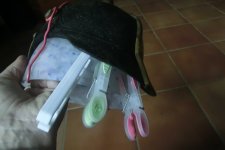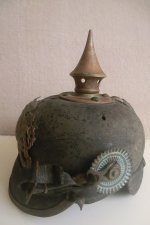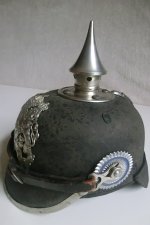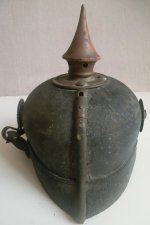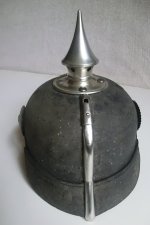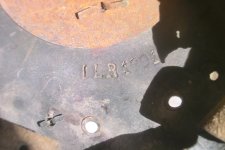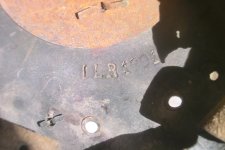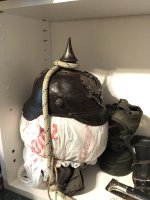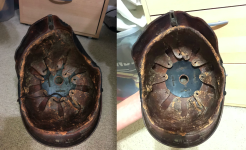HatEnjoyer
Active member
Hi! I acquired this pickelhaube a while ago, and I was wondering if anyone could help me out with a question I have. As seen in the pictures below, both the shell and rear visor of the pickelhaube are deformed, and its liner is very delicate.
Now I have done some searching through this forum’s pickelhaube restoration section, and Ive seen multiple instances of both water + vinegar mixtures and baths of lukewarm water being used to reshape pickelhaube shells and pieces, however, I was wondering how I should go about doing these methods with my pickelhaube, and what precisely I need to do in order to reshape it. I don’t want to damage the liner as again, it is very delicate, and I am not sure exactly how to use my hands to reshape the helmet.
Also, wouldn’t water dry out the leather? How would drying out the leather be prevented? Thank you!
TL;DR: what are the exact steps to reshaping a pickelhaube using a water + vinegar mixture or a bath of lukewarm water, and should I even do it with the liner still being retained?
Now I have done some searching through this forum’s pickelhaube restoration section, and Ive seen multiple instances of both water + vinegar mixtures and baths of lukewarm water being used to reshape pickelhaube shells and pieces, however, I was wondering how I should go about doing these methods with my pickelhaube, and what precisely I need to do in order to reshape it. I don’t want to damage the liner as again, it is very delicate, and I am not sure exactly how to use my hands to reshape the helmet.
Also, wouldn’t water dry out the leather? How would drying out the leather be prevented? Thank you!
TL;DR: what are the exact steps to reshaping a pickelhaube using a water + vinegar mixture or a bath of lukewarm water, and should I even do it with the liner still being retained?

